Introduction
Welcome to the world of sustainable integrated farming ! Choosing to use an integrated farming system isn’t just an option—it’s a smart move for making farming better for the environment and more effective.

Sustainable farming addresses the urgent need to balance ecological health, economic prosperity, and community well-being. By embracing sustainability, farmers become stewards of the land, contributing to a resilient and flourishing global ecosystem.
The benefits of integrated farming, such as optimized resource use, increased crop yield, and reduced environmental impact, underscore its significance in fostering a resilient and efficient agricultural system.
This guide will show you the important steps to start and do well in integrated farming in a simple way.
Assessing Your Readiness
Before diving into the world of integrated farming, it’s crucial to assess your readiness. Consider evaluating your knowledge of diverse agricultural practices, resource availability, and your commitment to sustainability. This preliminary self-assessment will help you lay a solid foundation for a successful start in an integrated farming system.
Assessing your readiness for embarking on the journey of integrated farming involves a comprehensive evaluation in two key areas.
- Knowledge and Skills
- Financial Preparedness
Knowledge and Skills
Understanding Sustainable Practices: Before delving into sustainable farming, it’s vital to grasp the intricacies of practices like soil conservation and biodiversity promotion. A strong foundation in these principles is essential for a successful sustainable farming journey.
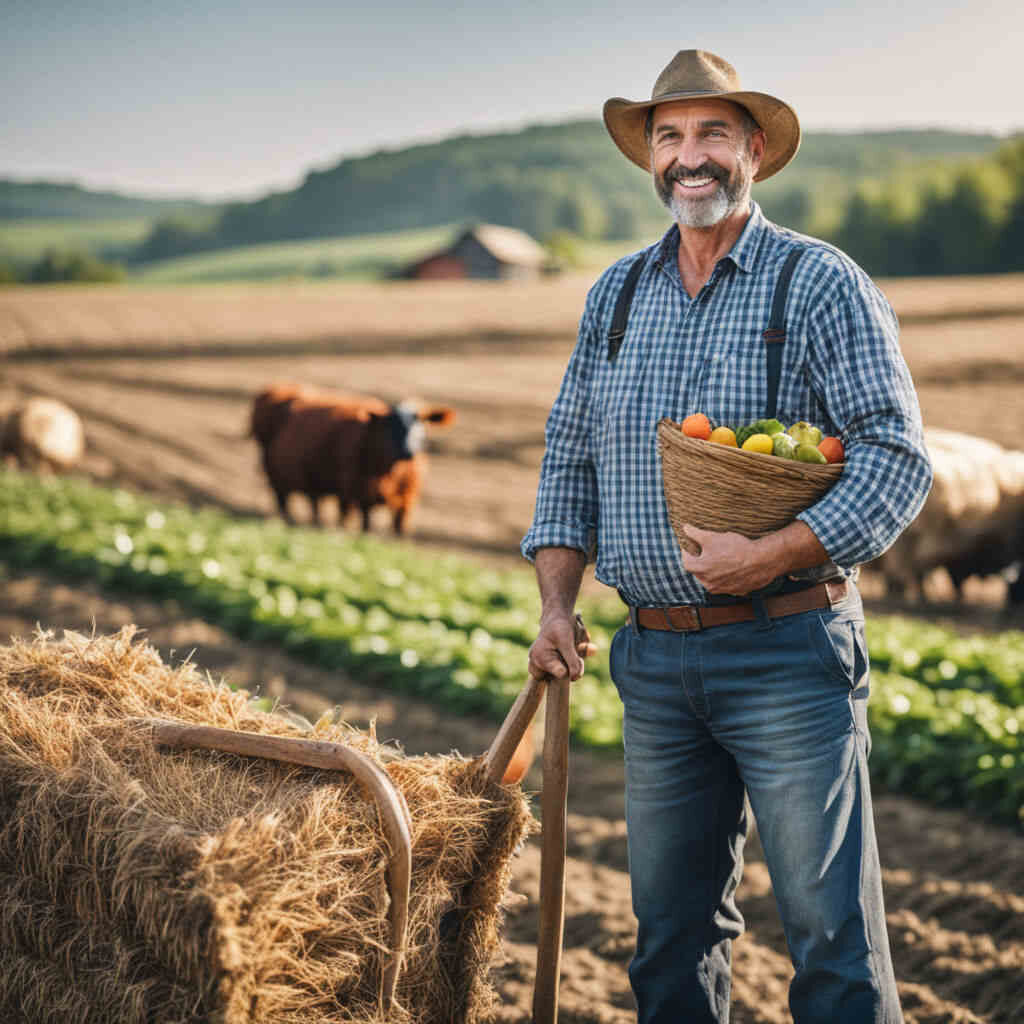
Necessary Farming Skills: Sustainable farming requires a skill set that extends beyond traditional methods. Proficiency in practices such as permaculture design and organic farming techniques is crucial for navigating the nuances of sustainable agriculture.
Financial Preparedness
Initial Investment: Transitioning to sustainable farming may necessitate an initial investment in infrastructure and education. While there are upfront costs involved, the long-term benefits, including improved environmental impact and resource optimization, make it a worthwhile investment.
Budgeting for Long-Term Sustainability: Establishing a well-thought-out budget that aligns with long-term sustainability goals is paramount for financial preparedness. This approach ensures that the farm remains economically viable while upholding sustainable principles, creating a balance between financial stability and environmental responsibility.
Choosing the Right Location
Choosing the right location is a pivotal aspect of sustainable farming. It involves a thoughtful consideration of various factors that can significantly impact the success and environmental impact of farming practices.
Key factors crucial in selecting an optimal location for an integrated farming system are :
- Climate
- Water availability
- Access to market
Climate Considerations
Climate considerations are crucial. Selecting crops that are well-suited to the local climate promotes natural adaptation, reducing the reliance on artificial interventions such as excessive irrigation or chemical inputs. This not only enhances crop resilience but also minimizes the ecological footprint associated with farming.
In the pursuit of sustainable farming, the strategic choice of crops tailored to the local climate is exemplified by vineyards in the Mediterranean. Grapes, a climate-sensitive crop, thrive in the warm, arid conditions of regions like Tuscany and southern Spain. By aligning cultivation with the natural climate, these vineyards promote natural adaptation, reducing reliance on artificial interventions like excessive irrigation or pesticides. This not only enhances grape quality but also minimizes the ecological impact, showcasing the symbiotic relationship between crops and climate.
Water Availability
Water availability is another key factor. Assessing water availability and implementing efficient irrigation systems are paramount for responsible water use. Sustainable farming practices aim to optimize water utilization, ensuring that this precious resource is conserved and used judiciously.

The Netafim drip irrigation system in Israel serves as a paradigm for sustainable water use in agriculture. Faced with water scarcity, Israeli farmers implemented efficient drip irrigation technology to optimize water utilization.
This system precisely delivers water to the roots of plants, reducing wastage and promoting responsible water use. By addressing water availability through innovative irrigation methods, these farms exemplify the commitment to sustainable practices, ensuring the longevity of both crops and water resources.
Access to Market
Proximity to Consumers:
Strategic location plays a pivotal role in sustainable farming, especially when the farm is situated in close proximity to consumers. Beyond the environmental benefits of reduced transportation emissions, this proximity establishes direct connections between producers and consumers.
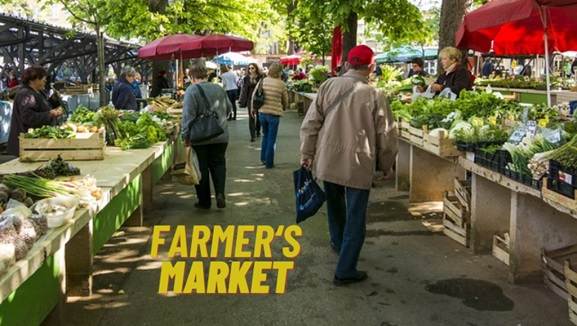
Farmer’s markets, such as the Ferry Plaza Farmers Market in San Francisco, epitomize the benefits of locating farms in close proximity to consumers. Local farmers directly connect with urban dwellers, reducing the need for extensive transportation. This not only cuts down on transportation emissions but also creates a direct bond between producers and consumers.
This direct relationship fosters a sense of community, transparency, and trust in the food supply chain. Consumers gain insight into the origin of their food, and farmers, in turn, receive direct feedback, creating a mutually beneficial ecosystem.
Transportation Infrastructure:
The sustainability of a farm extends beyond its boundaries to the transportation networks it relies on. Access to reliable transportation infrastructure is crucial for the efficient and sustainable distribution of farm products to broader markets.
The Netherlands’ well-developed cycling infrastructure facilitating the transport of agricultural products provides a noteworthy example. Dutch farmers utilize bicycles for short-distance transportation, minimizing the carbon footprint associated with conventional vehicular transport.
This efficient transportation approach, not only reduces the environmental impact associated with the movement of goods but also ensures that fresh produce reaches consumers promptly, minimizing waste and maximizing the positive impact of the farming enterprise on both local and global scales.
In essence, the right location sets the stage for a harmonious relationship between farming and the environment. It maximizes the efficiency of agricultural practices while minimizing the negative ecological consequences, aligning with the principles of sustainability and responsible resource management.
Crop Selection and Rotation Strategies
Native and Adaptive Species
Opting for native and adaptive crop species is a cornerstone of sustainable farming. By choosing plants naturally suited to the local environment, farmers enhance biodiversity and promote ecosystem resilience.
For instance, in regions prone to water scarcity, selecting drought-resistant crops not only conserves water but also reduces the dependence on external inputs like pesticides. This strategic choice aligns with the principles of sustainability and contributes to the overall health of the farm ecosystem.
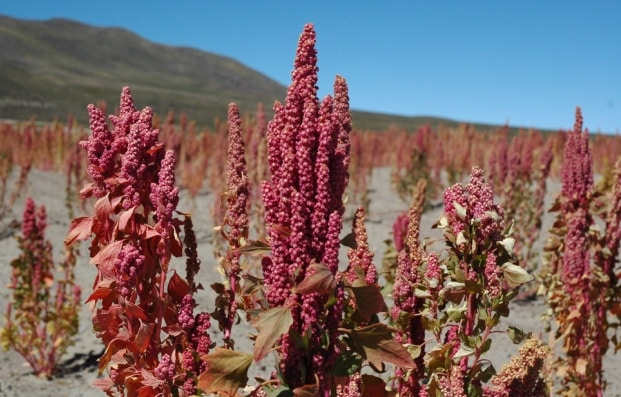
For example, in the arid regions of the southwestern United States, farmers might opt for the ancient and drought-resistant grain, quinoa. By selecting crops naturally suited to the local environment, farmers enhance biodiversity and resilience.
In the Philippines, the adoption of traditional rice varieties, adapted to local conditions, not only promotes genetic diversity but also reduces the need for synthetic pesticides and fertilizers, fostering a more sustainable and self-reliant agricultural system.
Crop Rotation Strategies
Strategic crop rotation is a vital practice in sustainable farming. It minimizes soil degradation, prevents the buildup of pests and diseases, and optimizes nutrient utilization.
Imagine the soil as a dynamic ecosystem that thrives on change.
In the Midwest of the United States, where corn and soybeans dominate the landscape, farmers employ strategic crop rotation. They rotate crops seasonally, introducing legumes like soybeans that fix nitrogen in the soil.
This breaks the cycle of pests and diseases that target specific crops, minimizing the need for chemical interventions. This approach, known as the corn-soybean rotation, not only prevents soil degradation but also optimizes nutrient utilization, ensuring the long-term health of the soil.
This approach, exemplifies a dynamic and eco-friendly farming method that ensures the long-term health and productivity of the soil.
Livestock Integration
Benefits of Mixed Farming
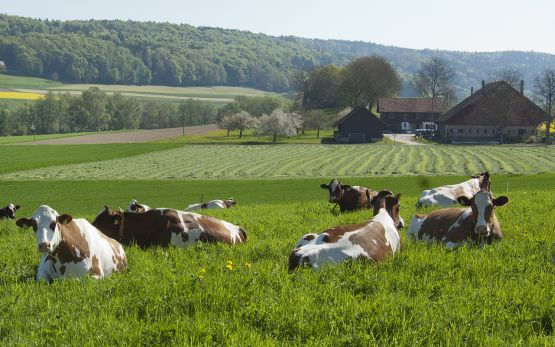
The integration of crop and livestock farming creates a symbiotic relationship, enhancing the overall health and sustainability of the farm.
An example is agroforestry, where trees are integrated with livestock grazing. The trees provide shade for animals, while their leaves contribute organic matter to the soil.
Consider a farm in New Zealand practicing mixed farming with sheep and kiwi fruit orchards. The symbiotic relationship between the two components is evident as sheep graze between the rows of kiwi vines. The sheep control grass and weed growth, eliminating the need for mechanical mowing or herbicides.
In return, their manure contributes to soil fertility. This mixed farming approach not only enhances the farm’s overall health but also reduces the ecological footprint by minimizing the use of external inputs and promoting a harmonious balance between livestock and crops.
This holistic approach minimizes the reliance on external inputs, showcasing the interdependence of different elements within the farm ecosystem.
Ethical Livestock Practices
Adopting ethical livestock practices is a fundamental principle of sustainable farming. Practices such as pasture rotation and humane treatment prioritize the well-being of animals.
Head to a pasture-based farm in the UK, and you’ll witness ethical livestock practices in action. Here, cows graze on rotated pastures, mimicking natural grazing patterns. This not only ensures the well-being of the animals but also promotes soil health through natural fertilization.
The practice of pasture rotation allows for regrowth and prevents overgrazing, contributing to the farm’s sustainability. Ethical livestock practices align with the principles of compassionate and sustainable farming, creating a system where the welfare of the animals is prioritized alongside ecological harmony.
Sustainable Farming Techniques
A sustainable farming aspirant should embrace two key techniques: organic farming, avoiding synthetic chemicals and promoting natural pest control; and permaculture design, mimicking natural ecosystems for optimal land use and biodiversity. These practices ensure a holistic and environmentally conscious approach to farming, fostering sustainability for the long term.
Organic Farming Methods
Avoiding Synthetic Chemicals
Organic farming advocates for environmentally friendly practices by avoiding the use of synthetic chemicals.
Consider the example of an organic apple orchard where farmers refrain from using synthetic pesticides. Instead, they deploy natural alternatives like neem oil or introduce beneficial insects to control pests.
This approach not only protects the health of the consumers but also preserves soil fertility by avoiding the detrimental impacts of synthetic chemicals on the environment.
Natural Pest Control – Integrated Pest Management
Adopting integrated pest management (IPM) and other natural pest control methods reflects a dedication to minimizing dependence on chemical pesticides.
Consider a diverse vegetable farm as an example. Through strategic planting of pest-resistant crops alongside susceptible ones, farmers establish a natural barrier, reducing the necessity for chemical interventions.
This mindful approach not only protects the ecosystem’s health but also fosters a more harmonious and robust agricultural system.
Permaculture Design
Mimicking Natural Ecosystems
Permaculture design functions as a seamless interaction with nature, replicating natural ecosystems to maximize space and resources.
In a permaculture space, fruit trees coexist with companion plants offering natural pest control or nitrogen fixation. This purposeful imitation promotes biodiversity, fostering a flourishing ecosystem where each element holds a crucial role.
The permaculture approach illustrates that by harmonizing with nature, farms can evolve into self-sustaining and resilient ecosystems.
Maximizing Land Use Efficiency
The essence of permaculture lies in efficient land use, ensuring every inch of the farm contributes to its overall sustainability.
Picture a permaculture farm in a suburban setting. Here, small spaces between buildings are transformed into productive gardens using vertical gardening techniques.
This maximization of land use efficiency not only provides fresh produce to the local community but also demonstrates that sustainable farming can thrive even in limited spaces.
Permaculture exemplifies the notion that every corner of the land can be purposefully utilized to enhance both productivity and ecological balance.
Soil Management
For a beginner in integrated farming, thoughtful soil management is crucial. Start by understanding your soil’s composition and structure.
Understanding the soil’s composition and structure is essential for a sustainable farming aspirant for several reasons. It allows for tailored soil management practices, optimizing nutrient availability for crops.
Knowledge of soil structure aids in water retention and drainage planning, ensuring efficient water use and preventing erosion.
Implement organic matter practices like composting to enhance fertility and structure. Rotate crops strategically to prevent soil degradation and consider cover cropping to minimize erosion and improve soil health.
Regular monitoring and learning about your soil’s needs will contribute to a successful and sustainable integrated farming journey.
Composting
Composting, a cornerstone of sustainable farming, involves the conversion of organic waste into nutrient-rich soil.
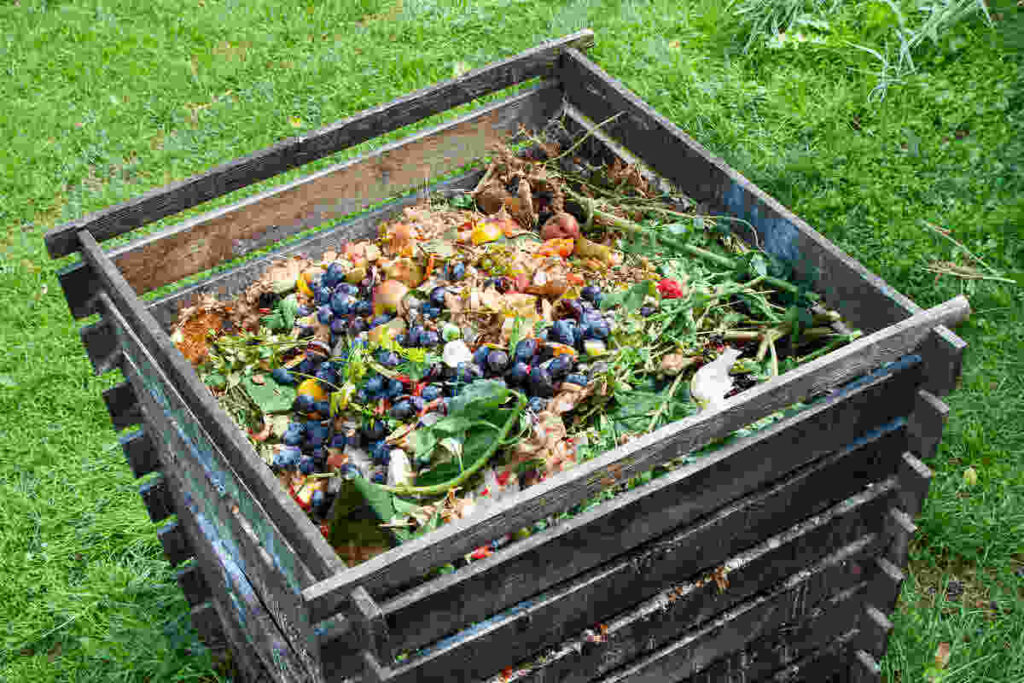
By combining kitchen scraps, plant residues, and other organic materials, farmers create a dynamic composting environment.
This natural process not only reduces waste but also produces a valuable resource that enhances soil health and fertility.
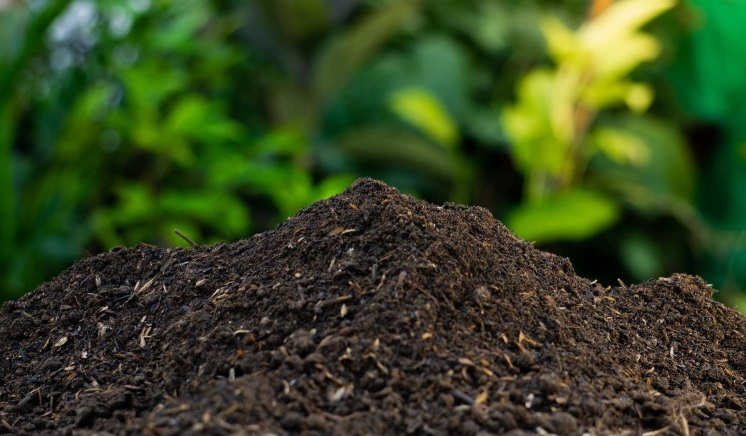
The application of compost is a powerful method for soil enrichment in sustainable farming practices. As compost integrates into the soil, it stimulates microbial activity, creating a thriving ecosystem.
This microbial activity, in turn, facilitates the breakdown of organic matter, making nutrients more accessible to plants. The result is improved soil structure, water retention, and a nutrient-rich environment that fosters robust plant growth.
Cover Cropping
Benefits of Cover Crops
Cover cropping stands as a natural and sustainable approach to soil improvement. These crops, strategically planted between main crop seasons, offer a range of benefits.
Picture a field post-harvest, covered with a green carpet of cover crops like rye or clover. These plants act as guardians, shielding the soil from the erosive forces of wind and rain.
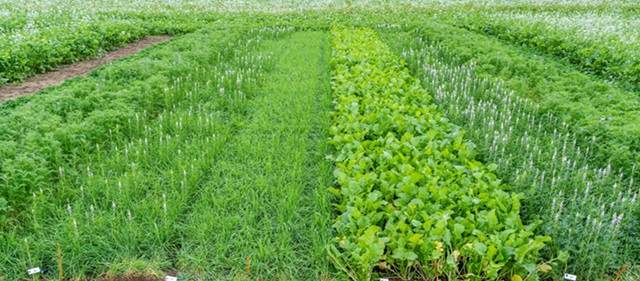
Simultaneously, their intricate root systems improve soil structure, preventing nutrient leaching and promoting water retention.
Additionally, cover crops suppress weed growth, reducing the need for herbicides, and contribute organic matter to the soil, enhancing its fertility. This multifaceted role makes cover crops a key ally in maintaining healthy and sustainable soils.
Choosing the Right Cover Crops
The art of cover cropping is in the selection. Imagine a farmer assessing the needs of their unique landscape. In a vineyard, a mix of leguminous cover crops like hairy vetch may be chosen, fixing nitrogen for the vines.
On a vegetable farm, a blend of cover crops such as oats and radishes could be strategically planted to suppress weeds and improve soil structure.
This personalized approach, considering local climate and soil conditions, ensures that cover crops become tailored soil companions, fortifying the land in ways that extend beyond a single season.
Water Conservation
Water conservation holds paramount importance for beginners in integrated farming for several reasons. Firstly, it ensures the sustainable use of a critical resource, safeguarding against water scarcity and promoting long-term agricultural resilience.
Efficient water management practices, such as drip irrigation or rainwater harvesting, not only reduce environmental impact but also contribute to cost savings.
Additionally, preserving water resources supports the health of ecosystems, fostering a balanced and sustainable environment for integrated farming practices.
By prioritizing water conservation, beginners can establish a foundation for environmentally conscious and economically viable integrated farming.
Drip Irrigation System
The drip irrigation system holds paramount importance in integrated farming due to its role in promoting efficient water use and contributing to the overall sustainability of the farming system.
Efficient Water Use
By delivering water directly to the roots of plants, drip irrigation minimizes water wastage, ensuring that each drop serves its purpose. This precision in water delivery is especially beneficial in integrated farming where diverse crops with varying water needs coexist.
imagine a vibrant orchard where water droplets delicately reach the roots of each fruit tree. This methodical delivery not only minimizes water wastage but also ensures that every drop serves its purpose.
From vineyards to vegetable plots, drip irrigation maximizes efficiency by directly hydrating the plants where they need it most. This water-conscious approach not only conserves a precious resource but also enhances crop yields, making it a cornerstone for sustainable water use in integrated farming.
Installation and Maintenance
The installation of a drip irrigation system is like setting the stage for a grand performance. Imagine the meticulous arrangement of drip lines in a sprawling field of crops. Each installation decision impacts the success of the entire production. Yet, the real magic unfolds through consistent maintenance.
Much like tuning an instrument, regular checks and adjustments ensure the system’s longevity and effectiveness. Proper installation and attentive maintenance together form the rhythm that sustains the harmony of water delivery in integrated farming.
Rainwater Harvesting
Rainwater harvesting holds significant importance in integrated farming as it provides a sustainable water source, reducing reliance on external water supplies and promoting self-sufficiency.
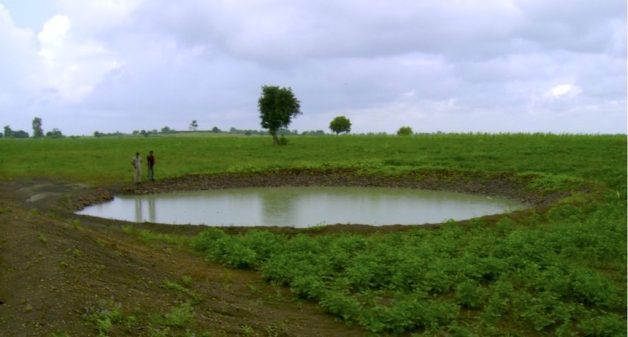
By collecting and storing rainwater, farms can harness a natural and renewable resource, fostering resilience in the face of unpredictable weather patterns.
This practice not only provides a sustainable water source but also reduces dependence on external supplies. It’s a harmonious partnership with nature, turning rainfall into a tangible asset.
The collected rainwater becomes a reservoir, waiting to nourish the land during dry spells, underlining the essence of self-sufficiency and ecological stewardship.
Implementing Renewable Energy
Benefits of Renewable Energy
Implementing renewable energy sources in integrated farms is crucial for several reasons
Sustainability
Renewable energy sources, such as solar or wind power, align with the principles of sustainability. They offer a clean and environmentally friendly alternative to traditional energy sources, reducing the carbon footprint of the farm.
Cost Savings
Once installed, renewable energy systems can lead to long-term cost savings. Solar panels, for example, harness energy from the sun, providing a consistent and renewable power source that can reduce electricity bills over time.
Energy Independence
Integrated farms with renewable energy sources become more self-reliant. They are less dependent on external energy grids, contributing to a more resilient and self-sufficient farming operation.
Considerations for Implementing Renewable Energy Sources
Site Assessment
Conduct a thorough assessment of the farm’s site to determine the feasibility of renewable energy installations. Factors such as sunlight exposure for solar panels or wind patterns for wind turbines should be considered.
Assessing Energy Needs
Understand the energy requirements of the integrated farm. This includes electricity needs for irrigation, equipment, and any other operational aspects. Tailor the renewable energy system to meet these specific needs.
Initial Investment
While renewable energy systems offer long-term cost savings, there is an initial investment for installation. Farms need to assess their budget and potential financing options for the upfront costs.
Maintenance and Upkeep
Regular maintenance is essential for the efficiency and longevity of renewable energy systems. Consider the ongoing costs and responsibilities associated with keeping the system in optimal working condition.
Regulatory Compliance
Familiarize yourself with local regulations and incentives related to renewable energy. Some regions offer grants, tax incentives, or other benefits to farms implementing sustainable energy practices.
By carefully considering these factors, integrated farms can harness the benefits of renewable energy sources, contributing to a more sustainable, cost-effective, and resilient farming operation.
Building Sustainable Infrastructure
Eco-Friendly Farm Structures
Green Building Materials
Beginning the journey towards sustainability begins right from the core of farm structures. Envision the construction of a barn crafted from reclaimed wood, recycled steel, or other environmentally conscious materials.
By opting for these choices, farms actively diminish their environmental footprint. This intentional decision not only lessens the need for fresh resources but also plays a part in fostering a more sustainable and circular method of constructing essential farm infrastructure.
Energy-Efficient Designs
Farmhouse should be designed with energy efficiency in mind. Large windows for natural light, well-insulated walls, and a layout that maximizes passive heating or cooling.
Energy-efficient designs in farm structures are not only about reducing electricity bills but also about promoting a greener footprint.
These thoughtful designs harness natural elements to create comfortable and environmentally friendly spaces, aligning farm infrastructure with sustainable practices.
Waste Management
Recycling on the Farm
Setting up a recycling station on the farm is a wise initiative. Picture a recycling station on the farm, where bins are designated for different materials—plastics, glass, paper. Implementing recycling practices directly on the farm minimizes waste.
Materials that once served their primary purpose find new life, reducing the need for landfill disposal.
This on-site recycling effort contributes to a circular and sustainable system where resources are utilized efficiently and waste is minimized.
Minimizing Agricultural Waste
Integrated farms should incorporate provisions for the strategic management of crop residues.
Instead of resorting to burning or disposal, agricultural waste undergoes repurposing. For instance, excess plant material can be transformed into compost, enriching the soil with essential nutrients.
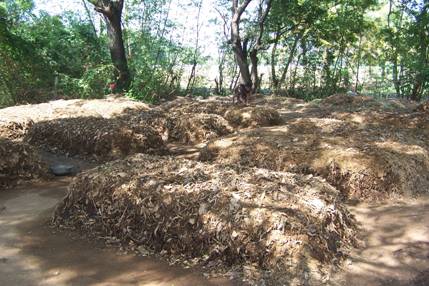
This deliberate strategy not only lessens the environmental effects of agricultural activities but also elevates sustainability.
By curbing waste and reintegrating it into the farming system, farms not only promote sustainable practices but also bolster the health and robustness of the entire agricultural ecosystem.
Regulatory Compliance
Integrated farming systems (IFS) embody a comprehensive approach to agriculture, merging diverse practices like crop production, livestock rearing, and aquaculture into a unified system.
This interconnected strategy brings forth various advantages, such as optimized resource utilization, enhanced soil health, and minimized environmental impacts.
However, successfully managing an IFS requires meticulous attention to a complex set of regulatory requirements aimed at safeguarding public health, environmental sustainability, and animal welfare.
Key Considerations for Regulatory Compliance
Environmental Regulations
IFS operators must align with regulations governing land use, water usage, pesticide application, and waste management. These regulations intend to curtail the environmental footprint of agricultural activities, ensuring the preservation of soil, water, and biodiversity.
Food Safety Regulations
Adherence to stringent food safety standards is imperative for IFS to guarantee the integrity of their produce. These standards cover aspects such as animal feed, animal health, harvesting practices, and food processing.
Animal Welfare Regulations
Prioritizing animal welfare involves providing proper housing, nutrition, and veterinary care for livestock. These regulations seek to minimize animal suffering and encourage humane farming practices.
Labor Regulations
Compliance with labor laws ensures fair wages, safe working conditions, and appropriate rest periods for agricultural workers, safeguarding their rights and well-being.
Recordkeeping and Reporting Requirements
IFS must maintain accurate records, including production data, pesticide usage, and animal health records, subject to inspection by regulatory authorities.
Strategies for Effective Compliance
Develop a Comprehensive Compliance Plan: Create a detailed plan outlining specific regulatory requirements and establish procedures to ensure compliance.
Seek Expert Guidance: Consult agricultural extension services, legal professionals, and regulatory experts for a thorough understanding of applicable regulations and best practices.
Implement Preventive Measures: Proactively adopt sustainable farming practices, conduct regular audits, and provide training for employees to minimize the risk of non-compliance.
Maintain Open Communication: Establish open channels with regulatory authorities to promptly address concerns, demonstrating a commitment to compliance.
Stay Updated on Regulatory Changes: Regularly review and update your compliance plan to reflect changes in regulations and industry standards.
Benefits of Regulatory Compliance
Reduced Risk of Legal Issues: Proactive compliance minimizes the risk of legal actions, fines, and damage to your business reputation.
Enhanced Market Reputation: Demonstrating strong compliance enhances your reputation as a responsible and ethical producer, fostering trust among consumers and industry partners.
Improved Productivity and Efficiency: Effective compliance practices lead to improved resource management, reduced waste, and enhanced productivity within your IFS.
Sustainability for the Future: Adherence to regulatory requirements ensures the long-term sustainability of your IFS, protecting the environment and promoting the well-being of animals and workers.
Marketing Your Sustainable Farming Products
In recent times, there has been an increasing demand for food produced in a sustainable and eco-friendly manner. Integrated Sustainable Farming (ISF) products are often perceived as superior in quality, flavor, and health benefits compared to conventionally produced items.
Given this rising demand, effective marketing strategies are essential to promote these organic products. Here are key considerations for marketing agriculture products derived from integrated sustainable farming:
Key Considerations for Marketing Agriculture Products
Highlight ISF Benefits: Educate consumers about the environmental and health advantages of integrated farming products through brochures, website content, social media campaigns, and public relations efforts.
Emphasize Quality and Taste: Showcase the superior taste and quality of ISF products in marketing materials, as consumers are often willing to pay a premium for high-quality, flavorful food.
Build Retailer and Distributor Relationships: Partner with retailers and distributors committed to selling integrated farming products to expand your market reach.
Certification and Labeling: Obtain certification from reputable organizations to verify sustainability and use clear labels to communicate this certification to consumers.
Establish Strong Brand Identity: Develop a distinctive brand identity that reflects the values of your integrated farming operation, aiding consumers in recognizing and remembering your products.
In addition to these general considerations, specific marketing strategies can be tailored for different types of integrated farming products:
For Fresh Produce:
- Use visual marketing to showcase the freshness and beauty of produce.
- Emphasize local sourcing to meet the growing interest in locally produced food.
- Educate consumers about different varieties of fruits and vegetables, detailing their flavor, texture, and nutritional value.
For Livestock and Dairy Products:
- Highlight humane animal treatment practices.
- Emphasize the superior flavor and nutrition of pasture-raised meat and dairy products.
- Collaborate with chefs and restaurants committed to using locally sourced, sustainable ingredients.
For Processed Foods:
- Utilize clear and transparent labeling to communicate sustainability credentials.
- Emphasize the use of whole, unprocessed ingredients.
- Educate consumers about the benefits of sustainable processing methods in preserving nutrients and flavor.
Challenges and Solutions
Common Challenges in Sustainable Farming
Balancing Production and Sustainability
Striking a balance between maximizing crop yields and maintaining environmental sustainability is challenging. Intensive agriculture often relies on heavy pesticide and fertilizer use, leading to soil degradation, water pollution, and harm to biodiversity.
Adapting to Climate Change
Climate change poses significant threats to sustainable farming, affecting crop yields and livestock health with increased extreme weather events, unpredictable rainfall patterns, and rising temperatures.
Consumer Awareness and Market Access
Limited consumer awareness and market access hinder the growth of sustainable farming. Consumers may be unaware of the benefits, and the lack of access to markets and distribution networks is a challenge.
Strategies for Overcoming Challenges
Enhancing Market Access and Consumer Education
Increase consumer awareness through educational campaigns and labeling initiatives. Support farmers’ cooperatives and local markets for improved market access.
Investing in Research and Development
Support ongoing research for identifying new sustainable farming methods, developing resilient crops and livestock breeds, and improving resource efficiency.
Developing Sustainable Supply Chains
Collaborate with retailers, distributors, and consumers to create sustainable supply chains for wider market reach.
Policy Support and Incentives
Encourage sustainable farming practices through government policies and incentives, providing financial support, research funding, and market development assistance.
Building Knowledge and Skills
Implement education and training programs for farmers and agricultural professionals to enhance their understanding of sustainable farming practices.
Empowering Farmers and Communities
Foster collaboration and knowledge sharing among farmers, communities, and agricultural organizations to promote the adoption of sustainable practices.
Conclusion
In a nutshell, sustainable farming is a comprehensive approach that involves environmental responsibility, economic viability, and social engagement. Achieving sustainability requires meticulous planning, the adoption of eco-friendly practices, and the ability to adapt to challenges.
For those looking to venture into sustainable farming, the obstacles may seem daunting, but the benefits are beyond measure. Embrace the principles of sustainability, draw lessons from both successes and setbacks, and contribute to a future where agriculture aligns with nature, securing a plentiful and resilient planet for generations to come.
